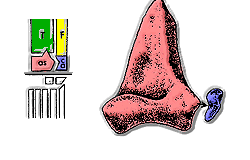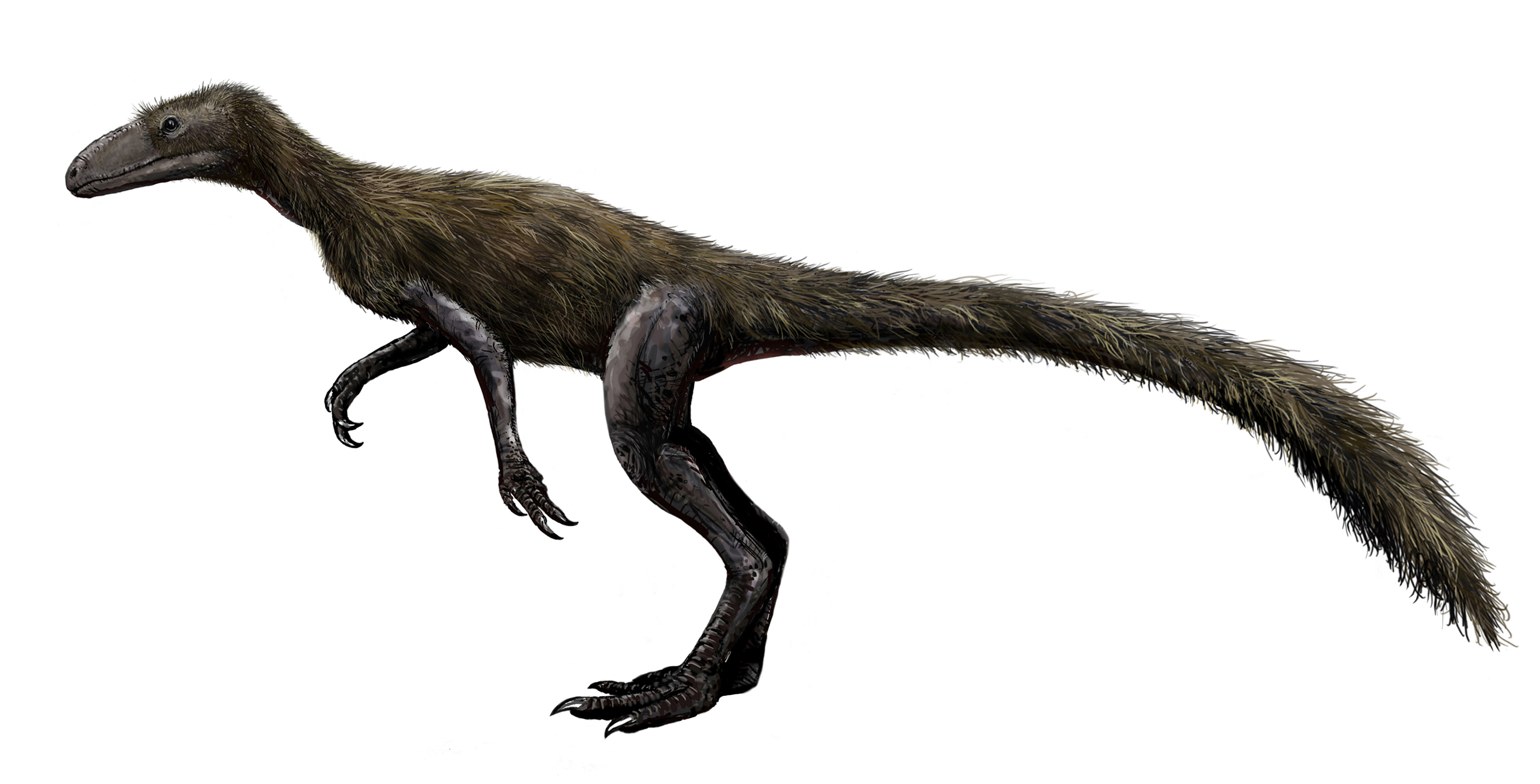|
Dinosauromorpha
Dinosauromorpha is a clade of avemetatarsalian archosaurs (reptiles closer to birds than to crocodilians) that includes the Dinosauria (dinosaurs) and some of their close relatives. It was originally defined to include dinosauriforms and lagerpetids, with later formulations specifically excluding pterosaurs from the group. Birds are the only dinosauromorphs which survive to the present day. Classification The name "Dinosauromorpha" was briefly coined by Michael J. Benton in 1985. It was considered an alternative name for the group "Ornithosuchia", which was named by Jacques Gauthier to correspond to archosaurs closer to dinosaurs than to crocodilians. Although "Ornithosuchia" was later recognized as a misnomer (since ornithosuchids are now considered closer to crocodilians than to dinosaurs), it was still a more popular term than Dinosauromorpha in the 1980s. The group encompassed by Gauthier's "Ornithosuchia" and Benton's "Dinosauromorpha" is now given the name Avemetatars ... [...More Info...] [...Related Items...] OR: [Wikipedia] [Google] [Baidu] |
Dinosauriformes
Dinosauromorpha is a clade of avemetatarsalian archosaurs (reptiles closer to birds than to crocodilians) that includes the Dinosauria (dinosaurs) and some of their close relatives. It was originally defined to include dinosauriforms and lagerpetids, with later formulations specifically excluding pterosaurs from the group. Birds are the only dinosauromorphs which survive to the present day. Classification The name "Dinosauromorpha" was briefly coined by Michael J. Benton in 1985. It was considered an alternative name for the group "Ornithosuchia", which was named by Jacques Gauthier to correspond to archosaurs closer to dinosaurs than to crocodilians. Although "Ornithosuchia" was later recognized as a misnomer (since ornithosuchids are now considered closer to crocodilians than to dinosaurs), it was still a more popular term than Dinosauromorpha in the 1980s. The group encompassed by Gauthier's "Ornithosuchia" and Benton's "Dinosauromorpha" is now given the name Avemetatar ... [...More Info...] [...Related Items...] OR: [Wikipedia] [Google] [Baidu] |
Lagerpetidae
Lagerpetidae (; originally Lagerpetonidae) is a family of basal avemetatarsalians. Though traditionally considered the earliest-diverging dinosauromorphs (reptiles closer to dinosaurs than to pterosaurs), fossils described in 2020 suggest that lagerpetids may instead be pterosauromorphs (closer to pterosaurs). Lagerpetid fossils are known from the Late Triassic of Argentina, Arizona, Brazil, Madagascar, New Mexico, and Texas. They were typically small, although some lagerpetids, like '' Dromomeron gigas'' and a specimen from the Santa Rosa Formation attributed to ''Dromomeron'' sp., were able to get quite large (femoral length ). Lagerpetid fossils are rare; the most common finds are bones of the hindlimbs, which possessed a number of unique features. Description As with most early avemetatarsalians, the most characteristic adaptations of lagerpetids occurred in their hip, leg and ankle bones, likely as a result of these being the bones most commonly preserved. Hip material is ... [...More Info...] [...Related Items...] OR: [Wikipedia] [Google] [Baidu] |
Asilisaurus
''Asilisaurus'' ( ); from Swahili, ''asili'' ("ancestor" or "foundation"), and Greek, (, "lizard") is an extinct genus of silesaurid archosaur. The type species is ''Asilisaurus kongwe.'' ''Asilisaurus'' fossils were uncovered in the Manda Beds of Tanzania and date back to the middle Ladinian-early Carnian, making it one of the oldest known members of the Avemetatarsalia (animals on the dinosaur/pterosaur side of the archosaurian family tree). It was the first non-dinosaurian dinosauriform recovered from Africa. The discovery of ''Asilisaurus'' has provided evidence for a rapid diversification of avemetatarsalians during the Middle Triassic, with the diversification of archosaurs during this time previously only documented in pseudosuchians ( crocodylian-line archosaurs). ''Asilisaurus'' is known from a relatively large amount of fossils compared to most non-dinosaur dinosauromorphs. This has allowed it to provide important information for the evolution of other silesaurids an ... [...More Info...] [...Related Items...] OR: [Wikipedia] [Google] [Baidu] |
Archosaur
Archosauria () is a clade of diapsids, with birds and crocodilians as the only living representatives. Archosaurs are broadly classified as reptiles, in the cladistic sense of the term which includes birds. Extinct archosaurs include non-avian dinosaurs, pterosaurs, and extinct relatives of crocodilians. Modern paleontologists define Archosauria as a crown group that includes the most recent common ancestor of living birds and crocodilians, and all of its descendants. The base of Archosauria splits into two clades: Pseudosuchia, which includes crocodilians and their extinct relatives, and Avemetatarsalia, which includes birds and their extinct relatives (such as non-avian dinosaurs and pterosaurs). Older definitions of the group Archosauria rely on shared morphological characteristics, such as an antorbital fenestra in the skull, serrated teeth, and an upright stance. Some extinct reptiles, such as proterosuchids and euparkeriids, possessed these features yet originated pri ... [...More Info...] [...Related Items...] OR: [Wikipedia] [Google] [Baidu] |
Avemetatarsalia
Avemetatarsalia (meaning "bird metatarsals") is a clade of diapsid reptiles containing all archosaurs more closely related to birds than to crocodilians. The two most successful groups of avemetatarsalians were the dinosaurs and pterosaurs. Dinosaurs were the largest terrestrial animals for much of the Mesozoic Era, and one group of small feathered dinosaurs (Aves, i.e. birds) has survived up to the present day. Pterosaurs were the first flying vertebrates and persisted through the Mesozoic before dying out at the Cretaceous-Paleogene (K-Pg) extinction event. Both dinosaurs and pterosaurs appeared in the Triassic Period, shortly after avemetatarsalians as a whole. The name Avemetatarsalia was first established by British palaeontologist Michael Benton in 1999. An alternate name is Panaves, or "all birds", in reference to its definition containing all animals, living or extinct, which are more closely related to birds than to crocodilians. Although dinosaurs and pterosaurs were th ... [...More Info...] [...Related Items...] OR: [Wikipedia] [Google] [Baidu] |
Silesauridae
Silesauridae is an extinct family of Triassic dinosauriforms. It is most commonly considered to be a clade of non-dinosaur dinosauriforms, and the sister group of dinosaurs. Some studies have instead suggested that most or all silesaurids comprised an early diverging clade or a paraphyletic grade within ornithischian dinosaurs. Silesaurids have a consistent general body plan, with a fairly long neck and legs and possibly quadrupedal habits, but most silesaurids are heavily fragmentary nonetheless. Furthermore, they occupied a variety of ecological niches, with early silesaurids (such as '' Lewisuchus'') being carnivorous and later taxa (such as ''Kwanasaurus'') having adaptations for specialized herbivory. As indicated by the contents of referred coprolites, '' Silesaurus'' may have been insectivorous, feeding selectively on small beetles and other arthropods. Classification Silesauridae is typically considered the sister group to Dinosauria. The group was named in 2010 by Ma ... [...More Info...] [...Related Items...] OR: [Wikipedia] [Google] [Baidu] |
Marasuchus
''Marasuchus'' (meaning " Mara crocodile") is a genus of basal dinosauriform archosaur which is possibly synonymous with ''Lagosuchus''. Both genera lived during the Late Triassic in what is now La Rioja Province, Argentina. ''Marasuchus'' contains a single species, ''Marasuchus lilloensis''. ''Marasuchus lilloensis'' was originally designated as ''Lagosuchus lilloensis'' in 1972. It was considered a new species of ''Lagosuchus'', a contemporary archosaur described the previous year. However, a 1994 study argued that the original material of ''Lagosuchus'' was undiagnostic. This would mean that ''Lagosuchus'' and its original species (''Lagosuchus talampayaensis)'' could be considered nomen dubia. Specimens of ''Lagosuchus'' stored at a museum in San Miguel de Tucuman were considered to be more diagnostic than those of ''L. talampayensis'', and thus they were given a new genus: ''Marasuchus''. A 2019 study redescribed the original material of ''Lagosuchus'' and concluded that ... [...More Info...] [...Related Items...] OR: [Wikipedia] [Google] [Baidu] |
Agnosphitys
''Agnosphitys'' (; "unknown begetter"; sometimes mistakenly called ''Agnostiphys'' or ''Agnosphytis'') is a genus of dinosauriform that lived during the Late Triassic. It contains only one species, the type species ''A. cromhallensis''. Its remains include an ilium, maxilla, astragalus and humerus, which date variously from the Norian and Rhaetian stages of the Late Triassic, or possibly as late as the Hettangian stage of the Early Jurassic. The fissure fill at Avon, of which ''Agnosphitys'' was probably recovered from, was a sinkhole formed by the dissolution of Lower Carboniferous limestones. Discovery and naming The type species, ''Agnosphitys cromhallensis'', was described by Nicholas Fraser, Kevin Padian, Gordon Walkden and A. L. M Davis in early 2002. The fossils consist of two specimens. The holotype consists of a single isolated left ilium, while the second specimen consists of a partial skeleton including a left maxilla, a humerus and a left astragalus, were found in t ... [...More Info...] [...Related Items...] OR: [Wikipedia] [Google] [Baidu] |
Marasuchus Hip Photo
''Marasuchus'' (meaning " Mara crocodile") is a genus of basal dinosauriform archosaur which is possibly synonymous with ''Lagosuchus''. Both genera lived during the Late Triassic in what is now La Rioja Province, Argentina. ''Marasuchus'' contains a single species, ''Marasuchus lilloensis''. ''Marasuchus lilloensis'' was originally designated as ''Lagosuchus lilloensis'' in 1972. It was considered a new species of ''Lagosuchus'', a contemporary archosaur described the previous year. However, a 1994 study argued that the original material of ''Lagosuchus'' was undiagnostic. This would mean that ''Lagosuchus'' and its original species (''Lagosuchus talampayaensis)'' could be considered nomen dubia. Specimens of ''Lagosuchus'' stored at a museum in San Miguel de Tucuman were considered to be more diagnostic than those of ''L. talampayensis'', and thus they were given a new genus: ''Marasuchus''. A 2019 study redescribed the original material of ''Lagosuchus'' and concluded that ... [...More Info...] [...Related Items...] OR: [Wikipedia] [Google] [Baidu] |
Dinosaur
Dinosaurs are a diverse group of reptiles of the clade Dinosauria. They first appeared during the Triassic period, between 243 and 233.23 million years ago (mya), although the exact origin and timing of the evolution of dinosaurs is the subject of active research. They became the dominant terrestrial vertebrates after the Triassic–Jurassic extinction event 201.3 mya; their dominance continued throughout the Jurassic and Cretaceous periods. The fossil record shows that birds are feathered dinosaurs, having evolved from earlier theropods during the Late Jurassic epoch, and are the only dinosaur lineage known to have survived the Cretaceous–Paleogene extinction event approximately 66 mya. Dinosaurs can therefore be divided into avian dinosaurs—birds—and the extinct non-avian dinosaurs, which are all dinosaurs other than birds. Dinosaurs are varied from taxonomic, morphological and ecological standpoints. Birds, at over 10,700 living species, are among ... [...More Info...] [...Related Items...] OR: [Wikipedia] [Google] [Baidu] |
Bird
Birds are a group of warm-blooded vertebrates constituting the class Aves (), characterised by feathers, toothless beaked jaws, the laying of hard-shelled eggs, a high metabolic rate, a four-chambered heart, and a strong yet lightweight skeleton. Birds live worldwide and range in size from the bee hummingbird to the ostrich. There are about ten thousand living species, more than half of which are passerine, or "perching" birds. Birds have whose development varies according to species; the only known groups without wings are the extinct moa and elephant birds. Wings, which are modified forelimbs, gave birds the ability to fly, although further evolution has led to the loss of flight in some birds, including ratites, penguins, and diverse endemic island species. The digestive and respiratory systems of birds are also uniquely adapted for flight. Some bird species of aquatic environments, particularly seabirds and some waterbirds, have further evolved for swimming. B ... [...More Info...] [...Related Items...] OR: [Wikipedia] [Google] [Baidu] |
Middle Triassic
In the geologic timescale, the Middle Triassic is the second of three epochs of the Triassic period or the middle of three series in which the Triassic system is divided in chronostratigraphy. The Middle Triassic spans the time between Ma and Ma (million years ago). It is preceded by the Early Triassic Epoch and followed by the Late Triassic Epoch. The Middle Triassic is divided into the Anisian and Ladinian ages or stages. Formerly the middle series in the Triassic was also known as Muschelkalk. This name is now only used for a specific unit of rock strata with approximately Middle Triassic age, found in western Europe. Middle Triassic fauna Following the Permian–Triassic extinction event, the most devastating of all mass-extinctions, life recovered slowly. In the Middle Triassic, many groups of organisms reached higher diversity again, such as the marine reptiles (e.g. ichthyosaurs, sauropterygians, thallatosaurs), ray-finned fish and many invertebrate groups like ... [...More Info...] [...Related Items...] OR: [Wikipedia] [Google] [Baidu] |









.jpg)